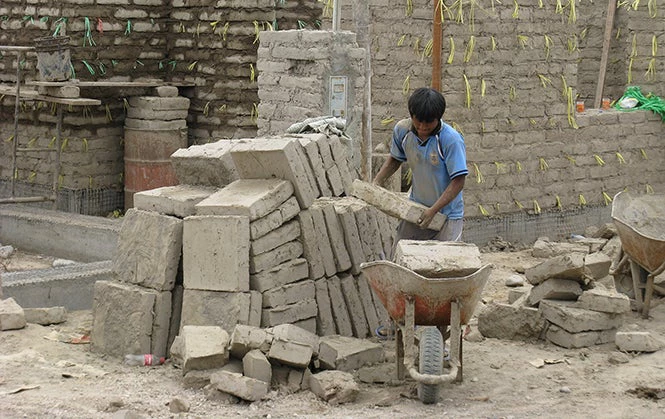
And while nature’s fury does not distinguish between urban and rural areas, a large majority of disaster losses are concentrated in cities, where they disproportionately affect the poor. This creates a great challenge for low and middle-income countries. In Latin America and the Caribbean, 200 million people—1/3 of the population—live in informal settlements , where most dwellings don’t comply with construction codes and home insurance is non-existent. Perhaps unsurprisingly, LAC’s informal districts also account for the majority of disaster-related deaths in the region.
Yet housing policies aimed at the poor tend to focus on supporting the construction of new units instead of retrofitting existing homes to make them safer—ignoring the fact that it is mostly buildings, not earthquakes, that kill people. As a result, the deficit in housing quality is still disturbingly high: millions of families remain exposed not just to disaster risk but also to high crime rates, eviction, poor housing conditions, as well as lack of access to basic services, healthcare, schools, and job opportunities.
To address these issues, countries will need to tackle the housing challenge from two different but complementary angles: they have to find ways of upgrading the existing housing stock, where the majority of the poor live, while making sure that new constructions comply with building regulations. After all, if floods or earthquakes do not distinguish between old or new homes, why should policy-makers? It is time for resilience to become part of the definition of “decent, affordable housing.”
An easy and inexpensive way to make housing more resilient—and save thousands of lives in the next natural disaster—is to help the millions living in informal settlements retrofit their houses to at least minimal standards of safety. Here are three ways we can create incentives for homeowners, governments, and the private sector to invest in housing retrofitting:
- Putting new technology to good use. Progresses in geospatial mapping and in-situ data collection, improved risk modeling techniques, combined with experience from decades of post-disaster interventions, are making it easier and cheaper to locate dangerous areas, assess the risks affecting the housing stock, and then design retrofitting solutions to mitigate them.
- Leveraging governments’ strengths. All over the developing world, governments already have institutions, policies, programs and instruments responding to the demand for decent, affordable housing (e.g. land formalization agencies, land banks, housing subsidies, and disaster risk management strategies). By adapting existing tools, governments can develop new incentives for homeowners to retrofit their property , such as subsidies, access to affordable loans, simplified construction licenses, property formalization and registration. For instance, areas where a high percentage of homes meet a minimum location and quality threshold for retrofitting could also be awarded a more rapid build-out of sewers, access ways, public spaces, and other infrastructure, which in turn would advance densification, urban redevelopment and environmentally-friendly construction initiatives, and would foster the creation of a vibrant home insurance market.
- Embracing and improving self-construction. No government in the developing world could afford to subsidize or outsource the construction of enough new housing units to meet the current demand. Self-construction is the only realistic way many urban residents can get a roof over their heads . Governments should stop wasting money fighting informality, and embrace its complexity and potential for saving lives. The challenge for policymakers is to incentivize families to build or improve their houses in compliance with appropriate regulations and in safe locations. Technology could also help make informal housing safer, including through apps that would alert people to the housing risks of a given area or instruct them in how to build safer structures.




Join the Conversation